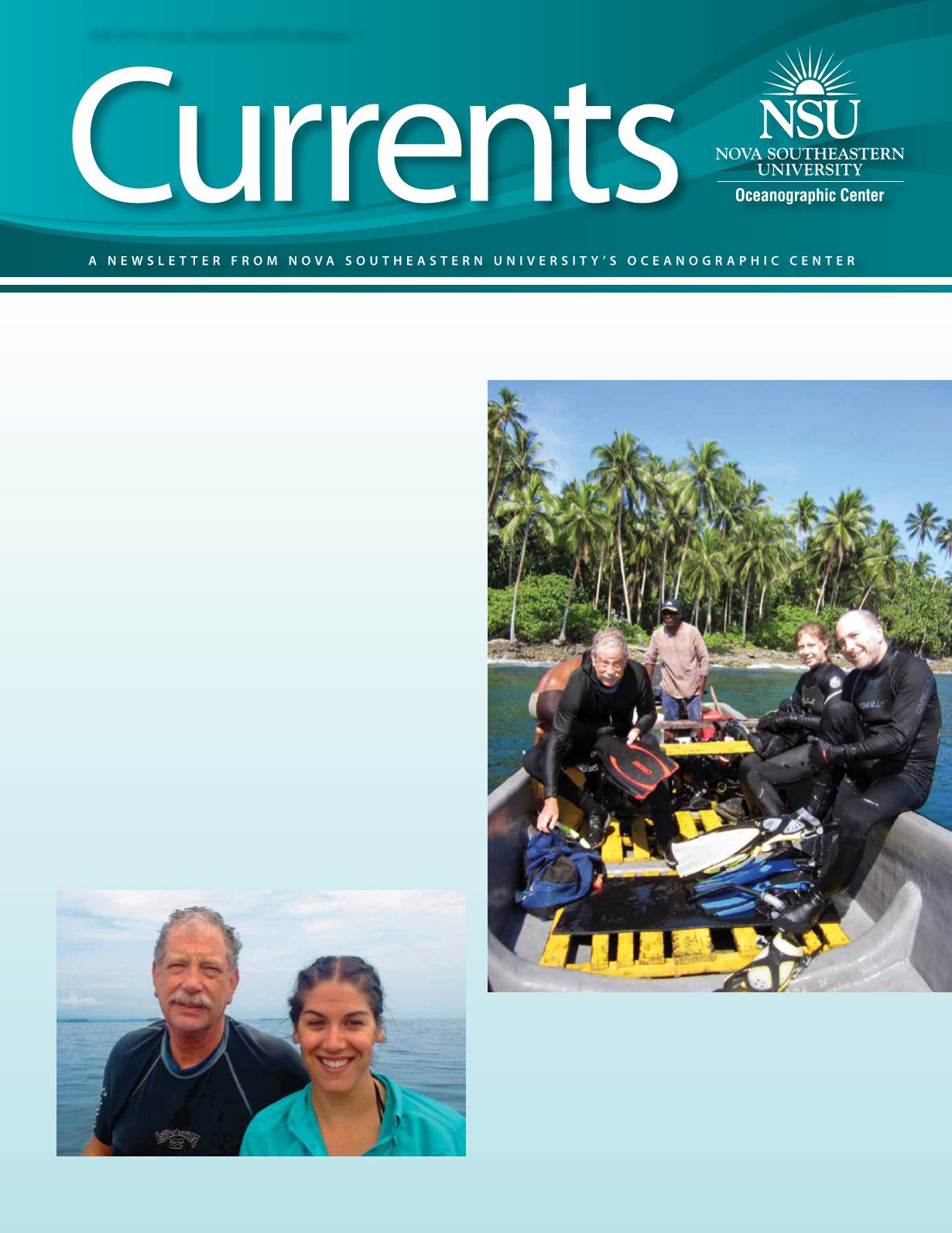
With recent growing interest in the global impacts on coral
reef ecosystems
James D. Thomas
, Ph.D., professor, recently
lead a team of international scientists and graduate students
to the coral reefs of the Madang Lagoon on the north
coast of New Guinea. While these reefs are the most diverse
scientifically documented, little attention has been focused
on the spectacular diversity there because of the difficulty in
getting research efforts to the area.
The timing of the recent expedition was crucial, because it will
serve as the only scientific update that would be conducted in
the region before a number of environmental impacts will be
felt in the lagoon. These impacts include the dumping of mine
tailings from a nearby nickel mine that was recently opened
and the planned construction of as many as 10 additional tuna
canneries that will dump effluent in lagoon waters.
The scientific purpose of the three-week expedition was
to assess the state of biodiversity in the Madang Lagoon in
relationship to an extensive taxonomic database assembled
by researchers during the past 20 years. While a curator at
the Smithsonian Institution in the 1990s, Thomas providing
funding for a number of scientists visiting and documenting
the extensive diversity of the Madang Lagoon. Out of these
efforts grew a model organism approach to evaluating reef
diversity using cryptic, non-coral invertebrates as measures of
diversity and evolutionary history.
Professor Leads Research Team to New Guinea
Pictured from left: Jim Thomas, a boat captain, Mindi Summers, and
Greg Rouse
(continued on page 2)
The research team included Thomas; M.S. student
Stephanie
Andringa
; Greg Rouse; graduate student Mindi Summers
(Scripps); Terry Gosliner (California Academy of Sciences); and
Matthew Jebb, (Director, National Botanical Gardens, Ireland).
Thomas focused on cryptic crustaceans, Rouse on crinoids,
and Gosliner on nudibranchs. Jebb served as interpreter and
Fall 2013 Issue, Volume XXVIII, Number 1
Jim Thomas and graduate student Stephanie Andringa are shown after a dive.


